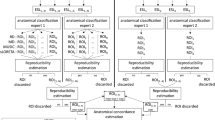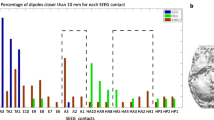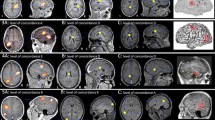Abstract
Background
Ictal electroencephalogram (EEG) source imaging has both advantages and disadvantages compared with source imaging of interictal epileptiform discharges. Ictal source imaging estimates the seizure onset zone directly. However, the rapid propagation of the ictal activity and the low signal-to-noise ratio impose additional challenges on ictal source imaging. Several methods have been developed to circumvent these challenges.
Objectives
To summarize and explain in plain terms the methods of ictal EEG source imaging and to review the published evidence on its accuracy.
Materials and methods
We systematically searched Medline for studies of ictal EEG source imaging. In addition, we summarize our clinical experience with ictal EEG source imaging and we present illustrative examples for the analysis process.
Results
Pooled data from 77 operated patients, from four clinical studies, showed that ictal EEG source imaging had a sensitivity of 83.3% (95% confidence interval: 69.8–92.5%) and specificity of 72.4% (95% confidence interval: 52.8–87.3%).
Conclusion
Ictal EEG source imaging is accurate and it should be added to the multimodal presurgical evaluation of patients with drug-resistant focal epilepsy.
Zusammenfassung
Hintergrund
Die Quellenanalyse iktaler EEG-Daten hat Vor- und Nachteile gegenüber der Analyse interiktaler epilepsietypischer Muster. Die iktale Quellenanalyse zielt darauf, die Lage der Anfallsursprungszone direkt zu berechnen. Jedoch stellen die schnelle Propagation iktaler Aktivität, sowie ein niedriges Signal-Rausch-Verhältnis zusätzliche Probleme dar. Verschiedene Methoden wurden als Lösungsansätze entwickelt.
Ziel der Arbeit
Zielsetzung der Arbeit ist eine Zusammenfassung der Methoden der Quellenanalyse iktaler EEG-Daten, eine Erläuterung der grundlegenden Funktionsweise, sowie ein Überblick über die publizierte Evidenz zur Genauigkeit.
Material und Methoden
Die Datenbank Medline wurde systematisch nach Studien zur iktalen EEG-Quellenanalyse durchsucht. Darüber hinaus fassen die Autoren ihre klinische Erfahrung zum Thema zusammen und zeigen illustrative Beispiele für den Auswertungsablauf.
Ergebnisse
Gepoolte Daten von 77 operierten Patienten aus 4 klinischen Studien liefern für die iktale Quellenanalyse eine Sensitivität von 83,3 % (95%-Konfidenzintervall, 95%-KI: 69,8–92,5 %) und eine Spezifität von 72,4 % (95%-KI: 52,8–87,3 %.)
Schlussfolgerung
Die Quellenanalyse iktaler EEG-Daten weist eine hohe Genauigkeit auf und sollte zusätzlich zur multimodalen prächirurgischen Evaluation von Patienten mit pharmakoresistenten fokalen Epilepsien durchgeführt werden..





Similar content being viewed by others
References
Alarcon G, Guy CN, Binnie CD, Walker SR, Elwes RDC, Polkey CE (1994) Intracerebral propagation of interictal activity in partial epilepsy: implications for source localisation. J Neurol Neurosurg Psychiatr 57:435–449
Assaf B, Ebersole J (1997) Continuous source imaging of scalp ictal rhythms in temporal lobe epilepsy. Epilepsia 38:1114–1123
Assaf BA, Ebersole JS (1999) Visual and quantitative ictal EEG predictors of outcome after temporal lobectomy. Epilepsia 40:52–61
Beniczky S, Lantz G, Rosenzweig I, Åkeson P, Pedersen B, Pinborg LH, Ziebell M, Jespersen B, Fuglsang-Frederiksen A (2013) Source localization of rhythmic ictal EEG activity: a study of diagnostic accuracy following STARD criteria. Epilepsia 54:1743–1752
Beniczky S, Oturai PS, Alving J, Sabers A, Herning M, Fabricius M (2006) Source analysis of epileptic discharges using multiple signal classification analysis. Neuroreport 17:1283–1287
Beniczky S, Rosenzweig I, Scherg M, Jordanov T, Lanfer B, Lantz G, Larsson PG (2016) Ictal EEG source imaging in presurgical evaluation: high agreement between analysis methods. Seizure 43:1–5
Blanke O, Lantz G, Seeck M, Spinelli L, Grave de Peralta R, Thut G (2000) Temporal and spatial determination of EEG seizure onset in the frequency domain. Clin Neurophysiol 111:763–772
Boon P, D’Havé M, Vanrumste B, Van Hoey G, Vonck K, Van Walleghem P (2002) Ictal source localization in presurgical patients with refractory epilepsy. J Clin Neurophysiol 19:461–468
Brodbeck V, Spinelli L, Lascano AM, Wissmeier M, Vargas MI, Vulliemoz S, Pollo C, Schaller K, Michel CM, Seeck M (2011) Electroencephalographic source imaging: a prospective study of 152 operated epileptic patients. Brain 134:2887–2897
Ding L, Worrell GA, Lagerlunf TD, He B (2007) Ictal source analysis: localization and imaging of causal interactions in humans. Neuroimage 34:575–586
Hirsch LJ, Spencer SS, Williamson PD, Spencer DD, Mattson RH (1991) Comparison of bitemporal and unitemporal epilepsy defined by depth electroencephalography. Ann Neurol 30:340–346
Lantz G, Michel CM, Seeck M, Blanke O, Landis T, Rosen I (1999) Frequency domain EEG source localization of ictal epileptiform activity in patients with partial complex epilepsy of temporal lobe origin. Clin Neurophysiol 110:176–184
Nemtsas P, Birot G, Pittau F, Michel CM, Schaller K, Vulliemoz S, Kimiskidis VK, Seeck M (2017) Source localization of ictal epileptic activity basedon high-density scalp EEG data. Epilepsia 58:1027–1036
Rosenow F, Lüders H (2001) Presurgical evaluation of epilepsy. Brain 124:1683–1700
Rosenzweig I, Fogarasi A, Johnsen B, Alving J, Fabricius ME, Scherg M, Neufeld MY, Pressler R, Kjaer TW, van Emde Boas W, Beniczky S (2014) Beyond the double banana: improved recognition of temporal lobe seizures in long-term EEG. J Clin Neurophysiol 31:1–9
Scherg M (1994) From EEG source localisation to source imaging. Acta Neurol Scand, Suppl 152:29–30
Scherg M (2011) Quick guide on 3D maps. http://www.besa.de/tutorials/quickguides/. Accessed 1 Feb 2018
Scherg M, Ebersole JS (1994) Brain source imaging of focal and multifocal epileptiform EEG activity. Neurophysiol Clin 24:51–60
Scherg M, Ille N, Bornfleth H, Berg P (2002) Advanced tools for digital EEG review: virtual source montages, whole-head mapping, correlation, and phase analysis. J Clin Neurophysiol 19:91–112
So N, Gloor P, Quesney LF, Jones-Gotman M, Olivier A, Andermann F (1989) Depth electrode investigations in patients with bitemporal epileptiform abnormalities. Ann Neurol 25:423–431
Staljanssens W, Strobbe G, Holen RV, Birot G, Gachwind M, Seeck M, Vandenberghe S, Vulliemoz S, Van Mierlo P (2017) Seizure onset zone localization from Ictal high-density EEG in refractory focal epilepsy. Brain Topogr 30:257–271
Yang L, Wilke C, Brinkmann B, Worrell GA, He B (2011) Dynamic imaging of ictal oscillations using non-invasive high-resolution EEG. Neuroimage 56:1908–1917
Acknowledgements
The study was supported by the D.B. Gupta research fellowship of the European Academy of Neurology.
Author information
Authors and Affiliations
Corresponding author
Ethics declarations
Conflict of interest
S. Beniczky and P. Sharma declare that they have no competing interests.
This article does not contain any studies with human participants or animals performed by any of the authors.
Rights and permissions
About this article
Cite this article
Beniczky, S., Sharma, P. Ictal EEG source imaging. Z. Epileptol. 31, 197–202 (2018). https://doi.org/10.1007/s10309-018-0184-z
Published:
Issue Date:
DOI: https://doi.org/10.1007/s10309-018-0184-z




